Sometime around midnight on Friday evening we will pass a blinking buoy out in the middle of Lake Erie a few miles east of West Sister Island. It is not marking any hazards. Nor is it for navigation. Rather it marks and commemorates the location of one of the most pivotal battles of the War of 1812.
Battle of Lake Erie. Engraving; By Murray Draper and Co. after Sully and Kearny; C. 1813.
Britain had the advantage in the Great Lakes early in the War of 1812. They controlled everything except Fort Niagara, Buffalo, Erie, and the southern shore of Lakes Erie and Ontario. The northern shores of the lakes were populated by British loyalists, many whom had fled during the Revolution. The young United States had a single armed ship on the Great Lakes, the Adam’s, which was captured when the British took Detroit at the outbreak of the war. But this imbalance was about to change.
Above: clip from National Park Service Perry’s International Peace Monument web site.
The construction of the naval vessels by both the USA and Great Britain was in part determinative of the outcome. At the outbreak of the war, the British built only a single big ship, while the United States constructed two brigs, refitted others, and somehow scrounged up and armed a total of 2 brigs, 5 schooners, and a sloop, manned by 540 sailors. The British had 2 ships, 1 brig, 2 schooners and a sloop, manned by 450 men.
More importantly, the British were out gunned. Cannon from foundries on the Chesapeake were hauled over the Appalachian Mountains and fitted in the vessels at Presque Isle (French for “almost an island), near Erie, PA, the location of the US shipyard on Lake Erie. The weight of the US broadside was 1536 pounds, while the British broadside weight was only 804 pounds.
While most Ohio school children are well aware of this event, (especially those of us lucky enough to have Mrs. Terry for Ohio History), only 17% of the subscribers to this Substack are from Ohio, 70% are from the US, 20 % are from Mexico, and 10% are from either Canada or the United Kingdom.
Books have been written about this battle. I own some of them. Even so I continue to find interesting facts. Today I discovered that Commodore Perry had 50 seasoned US Navy sailors transferred to him from the USS Constitution, which was being refitted at the time.
I won’t write up a blow by blow account, but the main thing to remember is Perry’s ship, the Lawrence, was abandoned during the fight and he transferred to another ship. Ironically his battle flag bore the words “Don’t give up the Ship!”
Perry took the flag with him when he transferred to the Niagara.
Below: an outline of the positions of the two navies from noon until 2:50 p.m.
In the final panel above you can see the Niagara preparing to cross the bows of the Charlotte and Detroit. He raked the British ships mercilessly, while the smaller US vessels raked them from the stern, until at last they surrendered.
Perry then sent his famous message to Major General William Henry Harrison: “We have met the enemy and they are ours. Two ships, two brigs, one schooner and one sloop.”
For further reading:
Thanks for sailing along~!





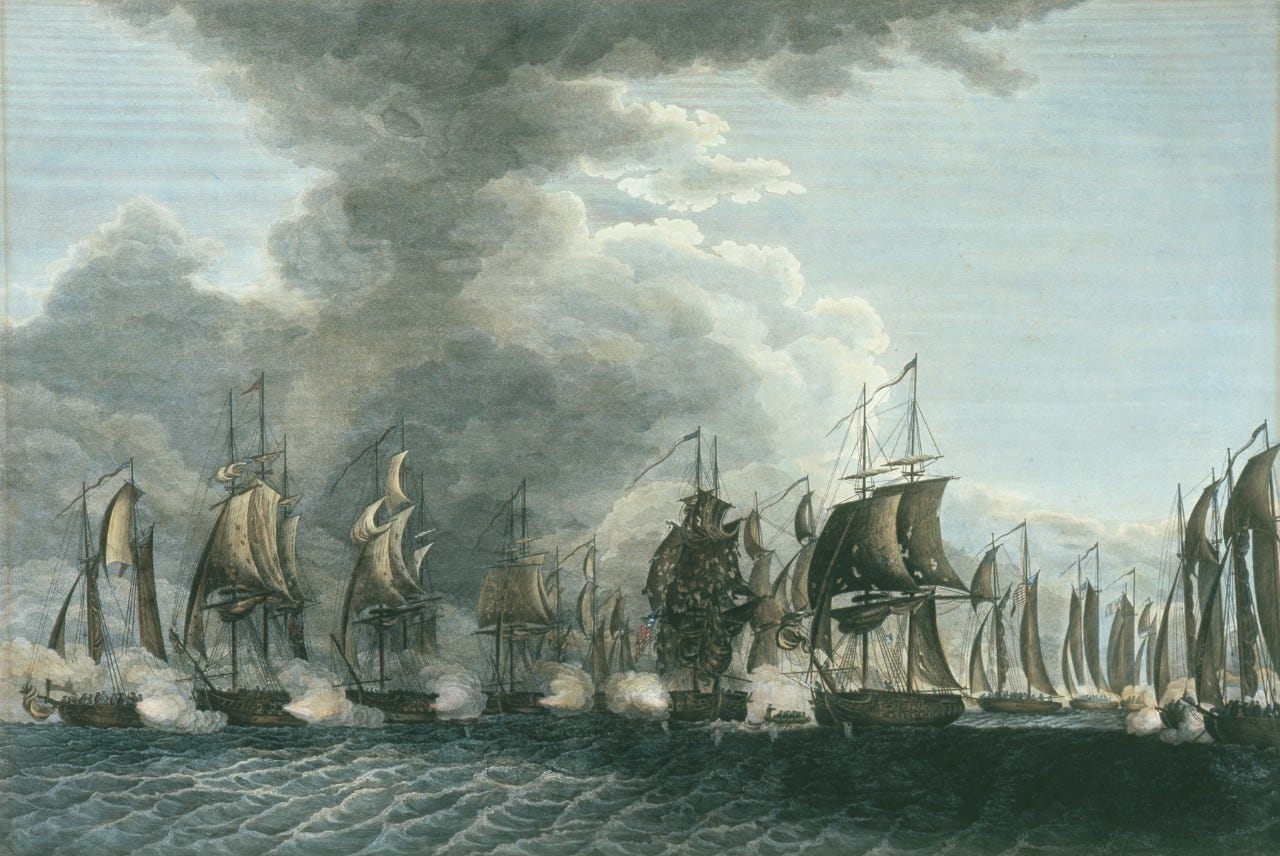

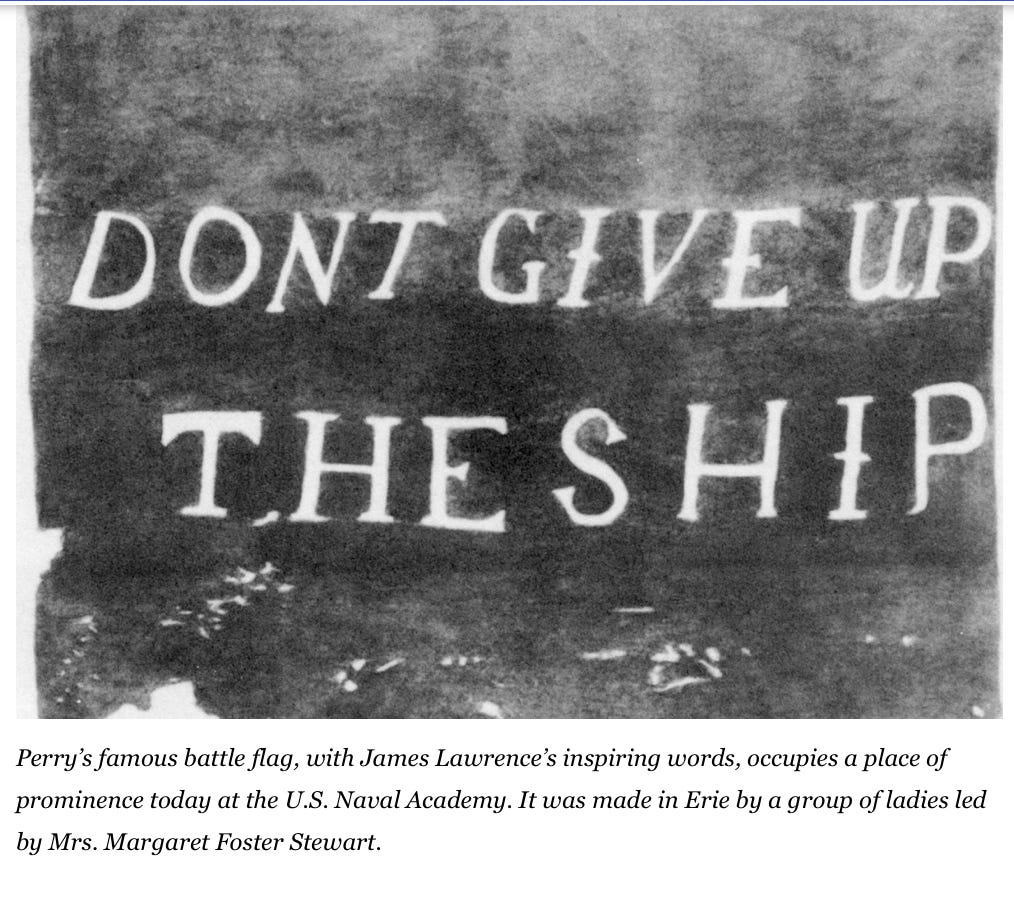
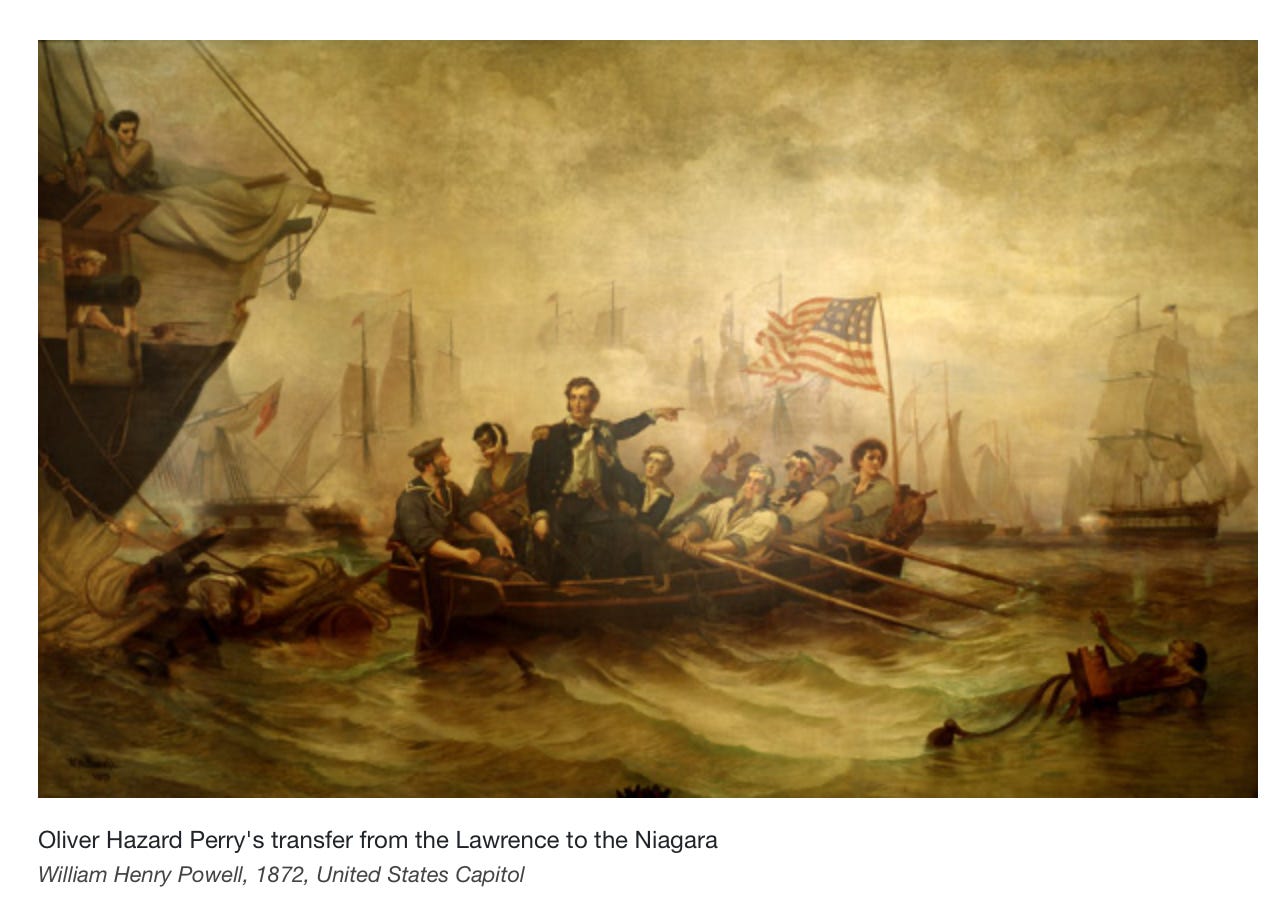
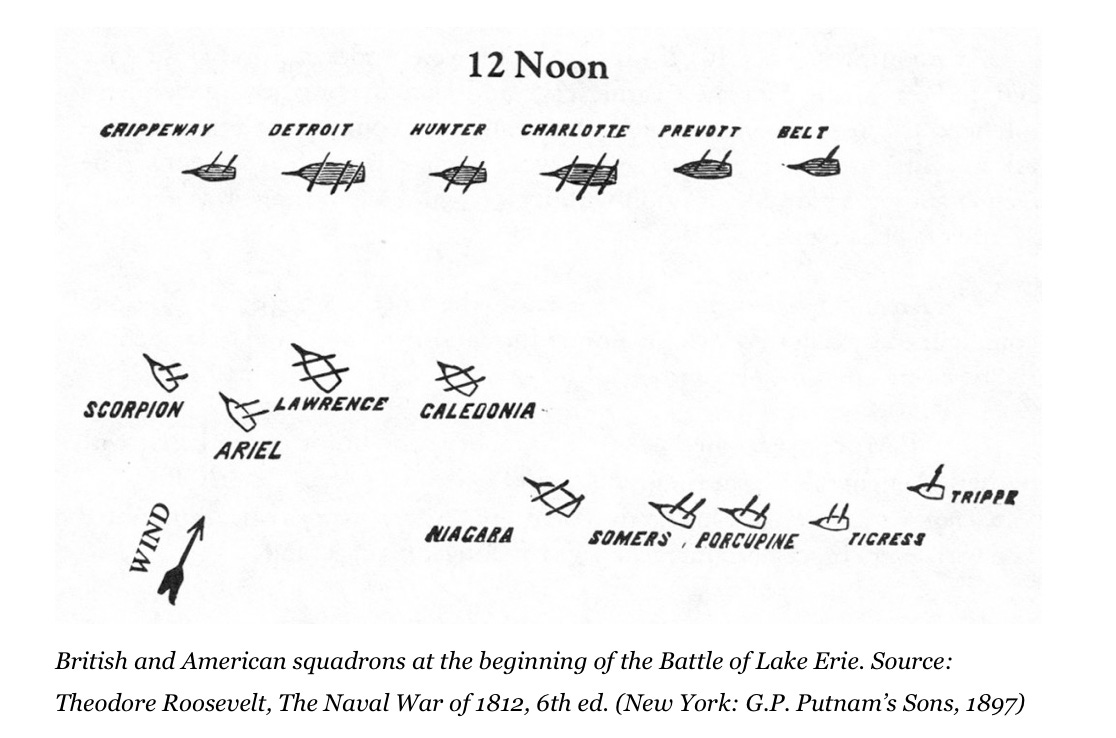
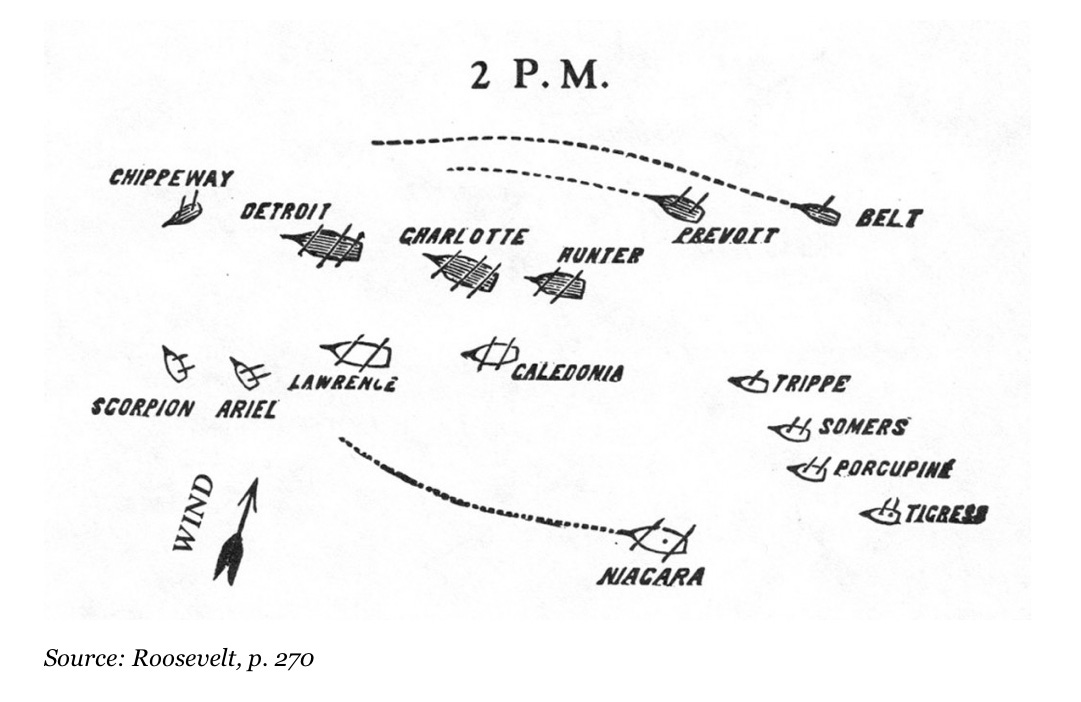
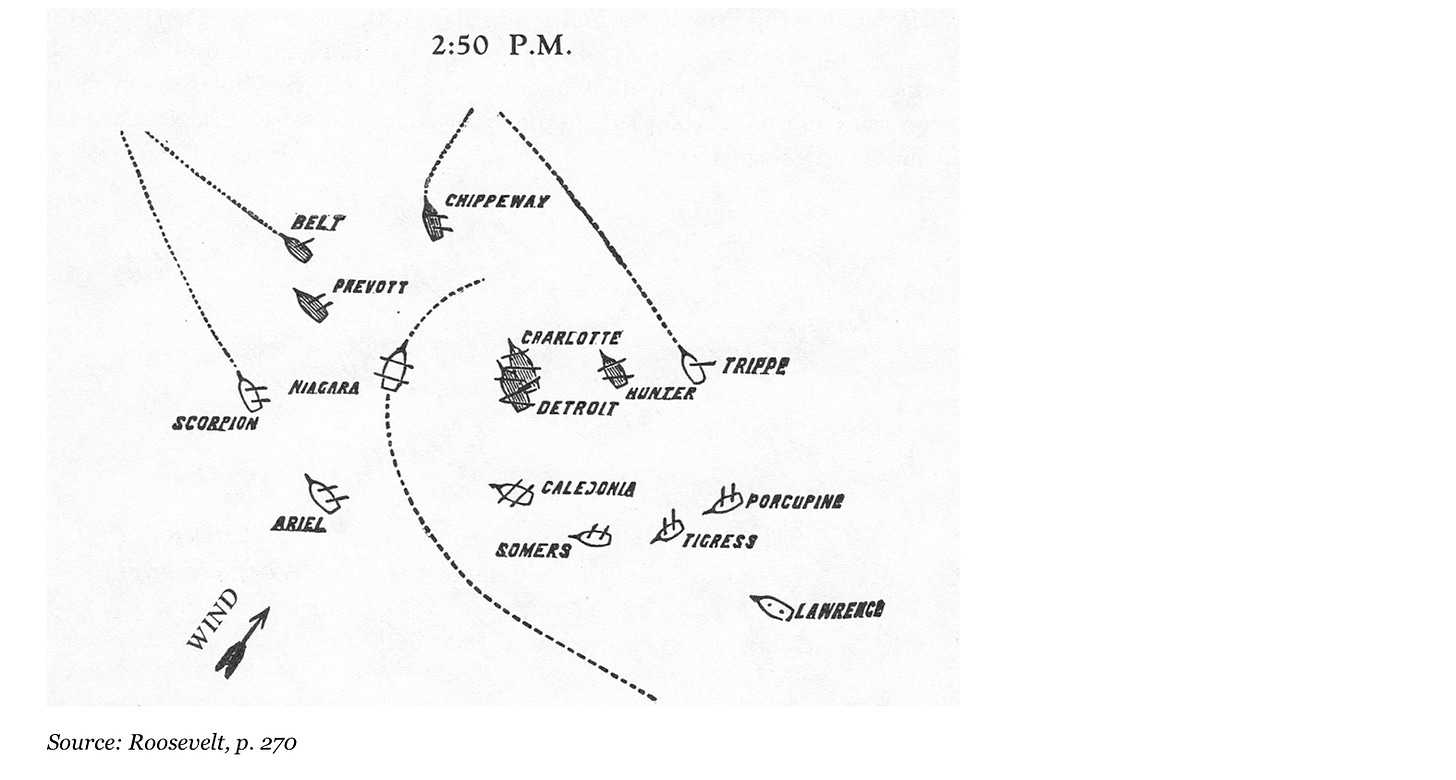
If you ever need ballast for a long race I know me or the kids would love to join! Next year Evan will be done with school by the time of the race if it’s in early June
I did not know there were Naval Battles in that conflict.